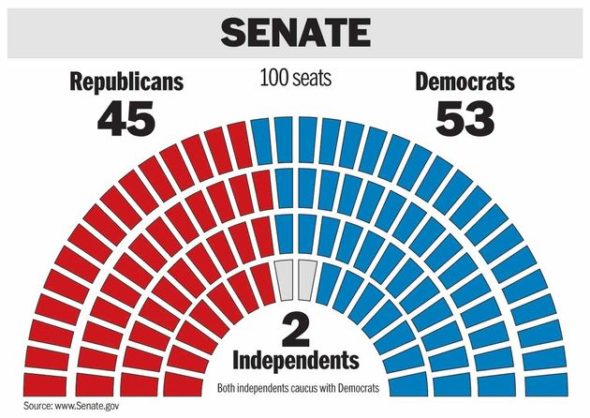Table Of Content

Each district elects a representative to the House of Representatives for a two-year term. Americans in the United States’s six territories are represented in the House of Representatives by an additional six non-voting delegates. From 1910 to 1975 committee and subcommittee chairmanship was determined purely by seniority; members of Congress sometimes had to wait 30 years to get one, but their chairship was independent of party leadership.
Non-voting delegates
Others argued that non-citizens ought to be excluded from the counts, which would have primarily affected Northern states with large immigrant populations. Meanwhile, some Northern Republicans, upset by Democrats’ disenfranchisement of Black Americans in the South, countered that representation ought to be reduced in Southern states that suppressed voting rights. There were also arguments over which method was best for apportioning seats, as one method tended to put slightly more seats in less populous states and the other put more seats in more populous states. Apportionment, or the process of determining the number of seats each state has in the U.S.
House officers
The House's chief such officer is the clerk, who maintains public records, prepares documents, and oversees junior officials, including pages until the discontinuation of House pages in 2011. The clerk also presides over the House at the beginning of each new Congress pending the election of a speaker. Another officer is the chief administrative officer, responsible for the day-to-day administrative support to the House of Representatives. The chairs of House committees, particularly influential standing committees such as Appropriations, Ways and Means, and Rules, are powerful but not officially part of the House leadership hierarchy. Until the post of majority leader was created, the chair of Ways and Means was the de facto majority leader.
Comparison to the Senate
Los Angeles is in the district represented by Jimmy Gomez (D). This analysis builds on earlier Pew Research Center work to analyze the gender makeup of Congress. Independent members of Congress are counted with the party they caucus with. Virginia’s 4th Congressional District seat, now vacant after Democrat Donald McEachin’s recent death, is excluded from the analysis.
Nine US House of Representatives races to watch in 2024 - Reuters
Nine US House of Representatives races to watch in 2024.
Posted: Fri, 05 Jan 2024 08:00:00 GMT [source]
The rules were changed in 1975 to permit party caucuses to elect chairs, shifting power upward to the party leaders. In 1995, Republicans under Newt Gingrich set a limit of three two-year terms for committee chairs. The chairman's powers are extensive; he controls the committee/subcommittee agenda, and may prevent the committee from dealing with a bill. The senior member of the minority party is known as the Ranking Member.
Personnel, mail and office expenses
Apart from the requirement that each state is to be entitled to at least one representative in the House of Representatives, the number of representatives in each state is in principle to be proportional to its population. Since the adoption of the Constitution, five distinct apportionment methods have been used. The ideal number of members has been a contentious issue since the country's founding. Unlike the Senate, the House of Representatives is not sectioned off so that only certain members are up for re-election each year. Instead, representatives face re-election every two years, meaning in 2024 all 435 seats will be up for election.
Minority leadership (Democratic)
But the bill has only four co-sponsors and looks unlikely to go anywhere. Clearly, expanding the House has many potential upsides — many of them beneficial to democracy, too — but, of course, a lot hinges on just how many seats would be added. Outside the pure toss-up races, there are several races classified as "leans," meaning they are competitive but one party holds an advantage.
How many House seats are Republican?

No further punishment is permitted during the impeachment proceedings; however, the party may face criminal penalties in a normal court of law. In the instance when the presidency and both Houses of Congress are controlled by one party, the speaker normally takes a low profile and defers to the president. For that situation the House minority leader can play the role of a de facto "leader of the opposition", often more so than the Senate minority leader, due to the more partisan nature of the House and the greater role of leadership. When the presidency and Senate are controlled by a different party from the one controlling the House, the speaker can become the de facto "leader of the opposition". Some notable examples include Tip O'Neill in the 1980s, Newt Gingrich in the 1990s, John Boehner in the early 2010s, and Nancy Pelosi in the late 2000s and again in the late 2010s and early 2020s. Since the speaker is a partisan officer with substantial power to control the business of the House, the position is often used for partisan advantage.
Representatives by Party
This latter committee, created in the 110th Congress and reauthorized for the 111th, has no jurisdiction over legislation and must be chartered anew at the start of every Congress. The House also appoints members to serve on joint committees, which include members of the Senate and House. Some joint committees oversee independent government bodies; for instance, the Joint Committee on the Library oversees the Library of Congress. Other joint committees serve to make advisory reports; for example, there exists a Joint Committee on Taxation. Hence, the power of joint committees is considerably lower than those of standing committees. Most committee work is performed by twenty standing committees, each of which has jurisdiction over a specific set of issues, such as Agriculture or Foreign Affairs.
During the first half of the 19th century, the House was frequently in conflict with the Senate over regionally divisive issues, including slavery. The North was much more populous than the South, and therefore dominated the House of Representatives. However, the North held no such advantage in the Senate, where the equal representation of states prevailed.
The House G.O.P.'s Incredible Shrinking Majority - The New York Times
The House G.O.P.'s Incredible Shrinking Majority.
Posted: Tue, 16 Jan 2024 08:00:00 GMT [source]
Alongside creating districts with even population, the state constitution requires the commission to consider geographic continuity and compliance with the Voting Rights Act, which sets rules for racial representation. Commissioners aren’t allowed to consider a district’s partisan makeup when drawing lines. The California Citizens Redistricting Commission was tasked with drawing new state political maps based on census data, a process that happens once every 10 years. House seat for the first time, going from 53 to 52, because the state grew more slowly than others. But the state of nearly 40 million people still has by far the largest House delegation.
The decennial apportionment also determines the size of each state's representation in the U.S. Constitution, the number of electors of any state equals the size of its total congressional delegation (House and Senate seats). Reapportionments normally occur following each decennial census, though the law that governs the total number of representatives and the method of apportionment to be carried into force at that time are enacted prior to the census. The Constitution empowers the House of Representatives to impeach federal officials for "Treason, Bribery, or other high Crimes and Misdemeanors" and empowers the Senate to try such impeachments. The House may approve "articles of impeachment" by a simple majority vote; however, a two-thirds vote is required for conviction in the Senate. A convicted official is automatically removed from office and may be disqualified from holding future office under the United States.
The United States Congress has two chambers, one called the Senate and the other called the House of Representatives (or “House” for short) which share the responsibilities of the legislative process to create federal statutory law. Apportionment is the process of dividing the 435 memberships, or seats, in the U.S. At the conclusion of each decennial census, the results are used to calculate the number of House memberships to which each state is entitled. This map shows the changes to the number of Congressional seats for each state between apportionment based on the 2010 Census and apportionment based on the 2020 Census.
She won a special election in 2021 after Luke Letlow died from COVID-19 complications shortly before swearing into office. Six of the 14 women senators who served before 1980 were either elected or appointed to fill their late husbands’ seats. Of those, two (Hattie Caraway of Arkansas and Maurine Brown Neuberger of Oregon) subsequently won full terms in their own right. In the 118th Congress which runs through Jan. 3, 2025, Republicans have majority control of the House of Representatives. Republicans took back the House by a slim majority in the 2022 midterm elections.
A number of ideas have emerged for how best to expand the House. Some reformers have suggested a one-time, arbitrary fix, like adding 50 seats. Others have argued for a more substantive overhaul, like resizing the House based on the population of the smallest state — often called the Wyoming rule, as Wyoming has occupied this position since 1990. But despite some states losing seats while others pick them up, the reapportionment process is itself now fairly mundane.
After a census is taken (in a year ending in 0), the year ending in 2 is the first year in which elections for U.S. House districts are based on that census (with the Congress based on those districts starting its term on the following January 3). As there is no legislation at the federal level mandating one particular system for elections to the House, systems are set at the state level.












